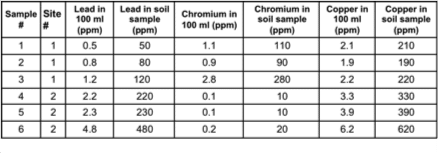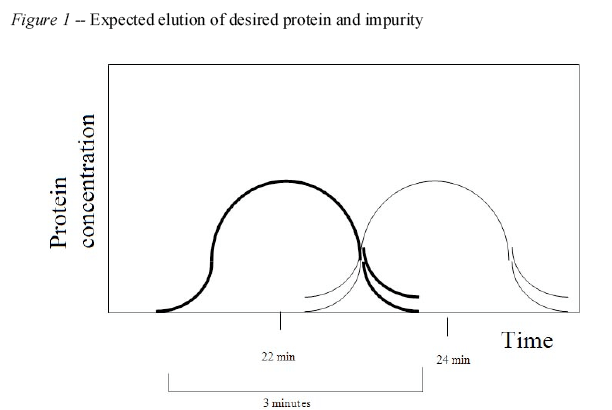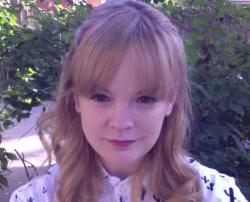
If you’re planning on taking the ACT, the ACT Science section may have been a deciding factor in your decision…or it may have been something you grudgingly accepted. But whether you think of yourself as a science person or not, you can still master this section! These ACT Science tips will help you kick your test prep up to the next level so that, by the time test day rolls around, you have all the ACT Science strategies you need.
During this fourth multiple-choice section of the ACT, you’ll be asked to answer 40 multiple-choice questions corresponding to six or seven passages. These questions focus extensively on scientific reasoning; only a handful will test scientific facts. What does this mean for you? Even if science classes aren’t your favorite, following these tips will help you strategize and succeed on test day!
Before we dive in, here’s Kat with some bonus ACT Science tips for test day!
Top 9 ACT Science Strategies for Test Day
Here they are: Magoosh’s top recommendations for ACT Science tips. Some of these you can apply to your practice right away, while others will take a little bit longer. No matter where you are in your ACT prep, though, you’ll find ACT Science strategies to boost your score here! Take a look.
1. Focus on Logic and Reasoning
We admit it: the title of this ACT section is a bit misleading. After all, wouldn’t you think that a section called “ACT Science” would test…science facts?
But it doesn’t—or at least, not primarily. The ACT isn’t interested in finding out how good your memorization skills are. Instead, the ACT Science test focuses on scientific reasoning. This means that your main ACT science strategy should be to use logic and reasoning to reach the right answer.
As you take practice tests and do practice problems, seeing a lot of questions and reading the correct answer explanations will help you begin to understand the logic behind everything, from scientific data in data representation questions to experiment design. Doing this will help you gradually build your ability to recognize patterns and make inferences that go beyond the dataset itself.
For example, imagine you’re looking at an ACT Science graphic that shows air flow under different temperature conditions. As you examine it, you may see that the air flow was stronger when the weather was cooler, warmer, or showed inconsistent patterns as temperatures changed. This will all be really helpful for answering the questions about this graphic! And the same applies to ACT Science passages.
2. Skim, Dissect, and Analyze
This is the ACT Science section, not the ACT Reading section. What does this mean for your ACT science strategy? Skim, don’t read.
When you skim the passage, you free up a lot of time. After you skim, spend more time reading and breaking down the actual question that’s in front of you. This opens up a lot of room for analysis as you make sense of what you’re being asked, instead of how the author constructs their argument.
This way, you can analyze the question you’re being asked instead of spending time breaking down the passage. Why is spending too long on the passage itself a bad idea? Because you could run out of time and perhaps not get enough time to focus on the question. Instead, zero in on that question right away!
3. Build Up Your Inference Skills
A prediction is an inference you make based on the given information. You will ALWAYS need to understand the given information first, before you can use it as the basis for your prediction. Sometimes all you will need to do is to carefully interpret the data to answer the question, and sometimes you’ll need to extend the information given to you by the passage.
Click for a practice problem!
Based on Figure 2, the oxygen saturation of Individual 2 at an altitude of 7 miles would be closest to:
A. 0%
B. 30%
C. 60%
D. 90%
The altitude in the question, 7 miles, is 1 mile higher than the highest data point shown in Figure 2 so this means we will have to make our own prediction. We can do this by extrapolating the line that would be formed by connecting the “Individual 2” data points. From 4 miles to 6 miles this line drops from approximately 80% to approximately 50% – a drop of 30% as the altitude increases by 2 miles. Extending the line, a further increase of 1 mile (half of 2 miles) in altitude would result in a further drop of 15% (half of 30%) in saturation. The final saturation would equal 50% minus 15%, or 35%. This is closest to answer B, 30%.
This question asked you to make a prediction for a given variable based on extending a graph. Another question might ask you to make a prediction for an entirely new variable but based on the current trends:
According to Figure 1 and Table 1, if a third protein had been present, with a molecular weight of 13,400 Daltons, its elution time would have been approximately:
A. 21 minutes
B. 22 minutes
C. 23 minutes
D. 24 minutes
The key phrase here “if a third protein had been present” indicates that we will need to make a prediction for an entirely new situation based on the info they’ve given. The molecular weight of the protein (13,400) lies between the weights of the two proteins in Table 1 (12,000 and 15,000). The time required for it to travel through the column will therefore be between the time required for the first protein (24 minutes) and the second protein (22 minutes). The weight lies approximately midway between the weights of the two proteins in the table, so its elution time will be close to midway between 24 and 22 minutes. The best estimate is 23 minutes, or choice C.
4. Identify the Key Terms
One of the most fundamental ACT Science strategies for doing well on the ACT Science test is knowing how to identify the key terms in the question and finding them in the passage. Because you don’t have time to read and understand every tiny detail in the Science passages, it’s essential to be able to quickly pull out the key pieces of data and use them.
The key to this strategy is training your brain to hone in on key terms rather than understanding everything that is going on in the passage. This allows you to increase the number of questions you can confidently get right.
So, what are “key terms”?
Key terms are the words, phrases, units, and numbers you will be looking up on the figures and in the passage or that you will be applying to answering the question.
Key terms are always:
- The name and number of the figure, table, or experiment to which the question refers
- Names of substances, objects, categories, etc.
- Any numbers or percentages that appear in the question
- Any trial or group numbers that appear in the question
- Anything that is capitalized or has a numerical value
- What the question is actually asking you to find
For every single question on the ACT Science section, underline the key terms. This helps keep you engaged and focused on what is important.
Click for a practice problem!
Based on the results in Figure 1, which of the following could be the absorbance values for samples containing 4 ppm of chromium and copper, respectively?
And here it is again with the key terms underlined:
Based on the results in Figure 1, which of the following could be the absorbance values for samples containing 4 ppm of chromium and copper, respectively?
Now let’s try to answer it:
Based on the results in Figure 1, which of the following could be the absorbance values for samples containing 4 ppm of chromium and copper, respectively?
A. Copper: 23%, Chromium: 25%
B. Copper: 23%, Chromium: 34%
C. Copper: 13%, Chromium: 25%
D. Copper: 13%, Chromium: 34%
Now, here is the figure you need to answer the question with the key terms circled on it. You should do this as well when you are annotating the Science test to help avoid making mistakes.

See how the key terms automatically point us to the answer? Copper at 4 ppm is at about 13%. Chromium is off the charts, but if the line continued we could guess that it would be at about 34% ppm, so our answer is D. This will help you out on even more complex questions as well.
It takes a little self-discipline to force yourself to underline or circle the key terms on every single question, but it will greatly reduce the number of errors you make on the ACT Science test and help your brain zoom in to what’s important! If you’re using Magoosh or other online practice materials, jot down these key terms on a separate sheet of paper during practice to make sure you’re prepped for the paper materials you’ll see on test day.
5. Find the Link in Tables and Graphs
While many questions on the ACT Science test only require you to look at one figure or table, there are also many that require you to combine information gleaned from multiple figures, tables, or even information in the passage. This is not as intimidating as it might initially seem if you follow one key process. I call this “finding the link” (a real creative title, I know).
Here’s how it works:
If a question asks you to look at multiple sources, you want to find the key term that appears on both sources. This is your “link” that helps you connect the dots between the data.
Click for a practice problem!
Considering the data in Figure 1 and Table 1, which of the following could have been the absorption level measured for lead in Sample 5?
A. 5%
B. 7%
C. 13%
D. 17%
Here are the related figures:
Figure 1

Table 1

The fact that there are two different sources (Figure 1 and Table 1) referenced in the question clues us in to the fact that we should be looking to apply this strategy.
We can see that Figure 1 contains several of the key terms from the question: lead, absorption, but not Sample 5. On Table 1, we find lead, Sample 5, but not absorption. So “lead” is the link here because it appears on both figures. But we need a little more help to actually connect the dots for this question. So what else appears on both Figure 1 and Table 1? The link is ppm.
If you notice, on the horizontal axis of Figure 1 we have ppm listed across the bottom, and along the top of the Table 1 we see ppm as well (ppm, if you are curious, stands for “parts per million.”) So, since the question asks about Sample 5, let’s start there in Table 1 and look at the “Lead in 100 ml” column. The value here is 2.3 ppm. So now, we can link this to Figure 1, find where 2.3 would fall along the horizontal axis of Figure 1 and follow the lead line (our other link), to see where it is at that point. Looks like it is closest to 13% and so our answer is C.
So, as a recap, the basic ACT Science strategy for linking charts and graphs is to find the key terms in your question, figure out which ones appear in both places referred to in the question and use that to link the other key terms. Like the rest of these ACT Science tips, this takes a little practice, but once you get used to it, you’ll be surprised how quickly you can answer some questions without even needing to fully understand what the question is asking!
6. Know and Understand All the Parts of Tables and Graphs
Quite often, on ACT Science, you’ll encounter graphs with X- and Y-axes. Each of these will show a different kind of information. The data points then show the relationships between these two kinds of information. For example, if you have an X-axis labeled in minutes and a Y-axis labeled in degrees Fahrenheit, the graph shows the change in temperature over time. The title will help you get a better overall picture of the relationship shown.
Similarly, ACT Science tables will have rows and columns, as well as an overall title to show you what the data in the table represents.
The best way to get used to the different parts of tables and graphs is to see a lot of them and study them. Break down what each part of every table and graph is and does. Then, work on connecting this information into a better understanding of the overall graphic.
Here are a handful of bonus ACT Science tips and strategies to help you navigate tables and graphs:
- Don’t Ignore Labels
Lots of students ignore the labels and go straight to the questions – don’t! Mentally categorize each graph, chart and table. (EX: “This is a chart that shows the relationship between opacity and density for various minerals.”) Do not just skip the statistics entirely and go straight to the question! While you may think this will save you time, it actually significantly decreases your accuracy. Data Analysis questions are like an open-book test.You wouldn’t skip an ACT Reading passage, so don’t skip the data. Make sure you read every tiny piece of writing on or near the data, including titles, the labels for the x and y-axes, column names, and even footnotes.
- Pay Attention to Units
Once you understand the labels, take special care to note the units (mph, m/sec, cm2, etc.). Are we dealing with seconds, minutes, or hours? Does one graph represent the month of June, while the other graph represents the entire year? The units may change from graph-to-graph or chart-to-table, and some ACT Science questions might ask you do simple conversions. - Use the Right Data
One of the most common mistakes on the ACT Science Test is using the wrong data. You don’t have to rush to answer. The data you need is in the passage, you just have to know where to look. Make sure you first understand what the question is asking, then stop and consider which table, graph, or chart provides the information you’ll need to solve for the correct answer.Harder ACT Science questions will require you to use more than one statistic. Don’t rush through the analysis! The questions may be multi-step, so look closely for key phrases in the question that refer to the labels you carefully studied earlier.
- Find the “Direction” Behind the Reasoning
Look for the general direction behind the reasoning. Most scientific reasoning either goes from broad to specific, or from specific to broad. It can be helpful in certain Conflicting Viewpoints questions to know whether the scientists are using a specific instance to make a generalization, or whether they are trying to apply a generalization to a specific rule.
7. Save the Conflicting Viewpoints Passage for Last
On test day, you’ll see six or seven passages on the ACT Science test. Out of these, five or six of them are going to look very similar to one another: they’ll contain findings from different scientific studies.
However, one of these passages is going to look very different. It’s going to be almost all text. In this passage, you’ll be reading about different scientific perspectives around a given phenomenon.
As you can imagine, this takes a little longer to answer. It also forces you to go more slowly, because you have to read the task more closely. To maximize your time on the ACT Science test, make sure that you get all the quick questions from other passages answered first. That way, you’ll have all those in the bag before you go and devote that extra focus and time to the conflicting viewpoints passage and questions.
8. Take Timed Practice Sections
Once you are familiar with the format of the ACT Science test, make sure to practice sections as much as possible with the clock ticking. This is the best way to condition yourself to the uncomfortable feeling of moving a little faster than you’d like to (which is necessary for the Science test) and gain confidence that you are probably doing better than you think you are.
Taking timed sections can also help you determine whether or not you need to concentrate on doing fewer passages and guessing on the rest to get your best score, and that is totally fine too! You may also find that as you apply these ACT Science tips to your practice, you you slow down at first—but as time goes on, you speed back up. Hang in there—it’s a marathon, not a sprint!
9. Don’t Leave Anything Blank
Unsure about the correct answer choice? Worried you’re running out of time? No matter what, don’t leave any answer choices blank on test day. The ACT doesn’t penalize you for wrong answer choices, so it can only benefit you to guess.
If you are nearly out of time, this may mean entering the same answer choice for any question you didn’t get to. However, if you have a little bit of time left, go through the questions and eliminate any answer choices that seem obviously wrong, then take your best guess from the remaining ones. Any time you can eliminate even one answer choice, your odds of guessing correctly go up significantly. And, after all, what do you have to lose?
Putting ACT Science Strategies to the Test
Now that you’ve got all these ACT Science tips under your belt, what next?
First, try your hand at some ACT Science practice to see how you can apply these ACT Science strategies on test day.
Next, take a look at our guide to breaking down ACT Science charts and graphs to try your hand at applying ACT Science strategies #5 and #6!
Practice applying these ACT Science tips in your regular ACT practice–this includes ACT practice tests!
Finally, round out your test prep by making sure you’re prepared for the test day as a whole. That way, you’ll have the best possible context in which to apply these new ACT Science tips!
- ACT Last Minute Tips: What to Bring on Test Day | Video Post
- How to Raise Your ACT Score: My Retake Tips | Video Post
- ACT Reading Strategies for Slow Readers | Video Post
Good luck on the test! With these ACT Science tips and strategies under your belt, we’re sure you’ll do great 🙂







Leave a Reply